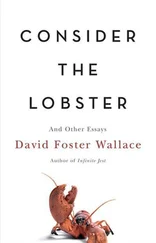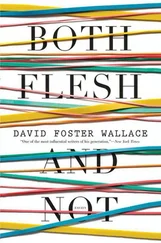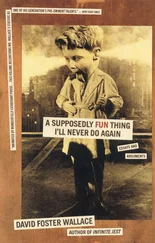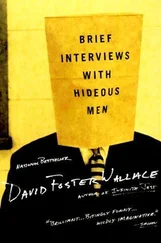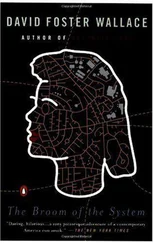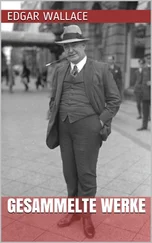By arrangement, Hope and myself were to attend the Sleep Clinic once per week, on Wednesdays, for a total duration of from four to six weeks, sleeping over-night in the Sleep chamber under close observation. Much of the Intake data collection process concerned Hope and myself’s nocturnal routines or ‘rituals’ surrounding retiring and preparing for sleep (these said ‘rituals’ being both common to and unique or distinctive of most married couples, the Sleep specialist explained), in order that these logistics and practices might be ‘re-created’—with the obvious exception of any physically intimate or sexual routines, the Somnologist inserted, clinically evincing no discernible embarrassment or ‘shyness’ as Hope avoided my glance — as closely as possible on these ‘over-nights,’ as we prepared to sleep under observation. In separate Dressing rooms, we first changed in to light green hospital gowns and disposable slippers, then proceeded in tandem to our assigned Sleep chamber, Hope using one hand to keep the long vertical ‘slit’ or incision or ‘cleft’ at the rear of her gown clenched shut over her bottom. Neither the gowns nor the high intensity lighting were what anyone would term ‘flattering’ or ‘modest’—and Hope, as a woman, later remonstrated to me that she had felt somewhat demeaned or ‘violated’ to be sleeping under thin coverlets with nameless persons observing her through a glass partition. (Frequent remarks or complaints like this were argumentative ‘bait’ to which I refused to respond or engage on the long, return rides home so early the following morning, where I would hurriedly shave, change clothes and prepare for the by now torturous, ‘peak hour’ commute up to Elizabeth for a full day of work. A frequent habit of Hope’s was sometimes to seemingly agree or acquiesce to a proposal and wait to give voice to her objections until the ‘agreed upon’ course of action was under way, at which time what would have been reasonable caveats and reservations now emerged as being merely pointless carping. I had, however, by this point in the conflict, learned to suppress frustration, indignation or even pointing out that the time for such complaints being productive had long passed, as pointing this out inevitably leads to the sort of conjugal argument or ‘clash of wills’ in which there can be no winner. One should also insert, as I had done to Chester [or ( “For God’s sake” ), ‘Jack’] Vivien, that our respective make-ups were such that conflict or argument was more difficult or ‘harder’ on myself than on either Hope, Naomi or Audrey, all of whom seemed to have a comparatively easy time of ‘shaking off’ the adrenaline and upset of a heated exchange.) We were instructed or encouraged to bring our personal hygiene or grooming products from home, and to use (first Hope doing so, then myself, just as at home) a private washroom and to undergo our personal hygiene ‘rituals’ in preparation for sleep (with, however, Hope eschewing her facial emollient, hair net, moisturizer and gloves due to the observers and panoply of ‘low light’ cameras, despite instructions to mimic, as closely as possible, our at home routines). Aides or attendants subsequently affixed white, circular ‘E.E.G.’ patches or ‘leads’—whose conductive gels were extremely chilly and ‘queer’ feeling, Hope observed — to our heads’ temples, foreheads, upper chests and arms, whereupon we then lay carefully or ‘gingerly’ down along the lengths of the Sleep chamber’s parallel beds, careful to avoid tangling the complex nests of wires which led from the leads to a grey chassised ‘relay’ or ‘induction’ monitor which hummed quietly in the Sleep chamber’s north-east corner. The ‘Sleep team’ technicians — some of whom, it emerged, were enrolled Medical students at nearby Rutgers University — wore the customary noiseless, white foot wear and ‘lab’ coats unbuttoned over casual or ‘mufti’ clothing. Somewhat surprisingly, three of our Sleep chamber’s apparently ‘glass’ walls were, upon being inside them, revealed to be, in reality, mirrored, such that we could not, from inside, see any of the technicians or recording equipment, while the fourth or final wall’s interior comprised a sophisticated, ‘Wall sized’ video screen or ‘projection’ of various commonly relaxing or soporific vistas, ‘scenes’ or tableaux: fields of nodding wheat, trickling streams, Winter spruces trimmed in fresh snow, small forest animals nibbling at deciduous ground fall, a sea-side sunset and so forth in this vein. The twin beds’ mattress and lone pillows were also revealed to be layered in a plastic compound which crinkled audibly under any movement, which I personally found distracting and somewhat unsanitary. The beds also contained metal railings along the sides which appeared rather higher and more substantial than the rails or sides one is accustomed to associating with a more typical ‘Hospital’ bed. Our case’s assigned Somnologist — Dr. Paphian, with his aforementioned subdued countenance and short, ‘salt and pepper’ hair-cut and sessile head — explained that some patients’ particular sleep dysfunctions involved somnambulism or certain frenetic or even potentially violent movements in the midst of sleep, and that the 24.5 inch brushed steel railings affixed to the chambers’ beds’ sides had been mandated by the Sleep Clinic’s insurance underwriter.
Also — as light reading for an average of 20 to 30 minutes before Hope customarily struck the elevated sconce’s light above her bed at home was a fairly firmly established part of our marriage’s routine for preparing to retire — Hope and myself spent, for three consecutive Wednesdays in a row, 20 or more minutes sitting awkwardly up in the narrow and ‘crib’-like (because of the high lateral railings) beds with only a crinkling institutional pillow for back support, ostensibly ‘reading’ in our respective beds in the Sleep chamber as we did at home, each holding our current ‘livre de chevets’ of choice, which Hope had brought in her Book club bag from home, but which were here, in this artificial setting, mere ‘props,’ and I did little more than absently turn the pages of Kurt Eichenwald’s Serpent on the Rock, as the idea of relaxing or ‘winding down’ while covered in E.E.G. leads and extrudent wires and fully reflected in three of the small room’s walls was somewhat farcical or absurd; but I was — in what remained close if sub-rosa ‘consultation’ with Jack Vivien — determined now to go through the experiment in full technical compliance, and not to complain, demur or give Hope any cause to suspect or think that I was not fully prepared to go through with my side of the ‘bargain.’ (Sometimes, nevertheless, admittedly, for instance when driving — particularly along the daily commute via the Garden State Parkway, or west-ward via 195, the ‘Jersey’ Turnpike, and ‘I’-276 around metropolitan Philadelphia’s northern border to the campus of out-of-State Bryn Mawr, to there-upon park the vehicle along Montgomery Avenue and upwardly observe the lights of our Audrey’s Freshman dormitory [or, more formally, ‘Ardmore House,’ in honor of a Nineteenth century college benefactor, and designed or ‘done up’ in the steep, grey, vertiginous, crenellated tower or ‘Martello’ style of a medieval era fortress] room on the tower or ‘keep’’s Fourth floor’s north-east corner come on or off as she moved about the room with her room-mate or prepared to retire or undress — I become so distraught, melancholic or consumed with over-whelming anguish or ‘dread’ for no apparent or discernible reason [the feeling, unrelated to the sleep deprivation whose symptoms I knew so well by that point in time, seems to come ‘out of nowhere’ and arise, as it were, out of some profound, unconscious, psychic void or ‘hole’] that I consider intentionally ‘jumping’ the median into on-coming traffic. This fear, on average, will last just a moment or two.)
Читать дальше



